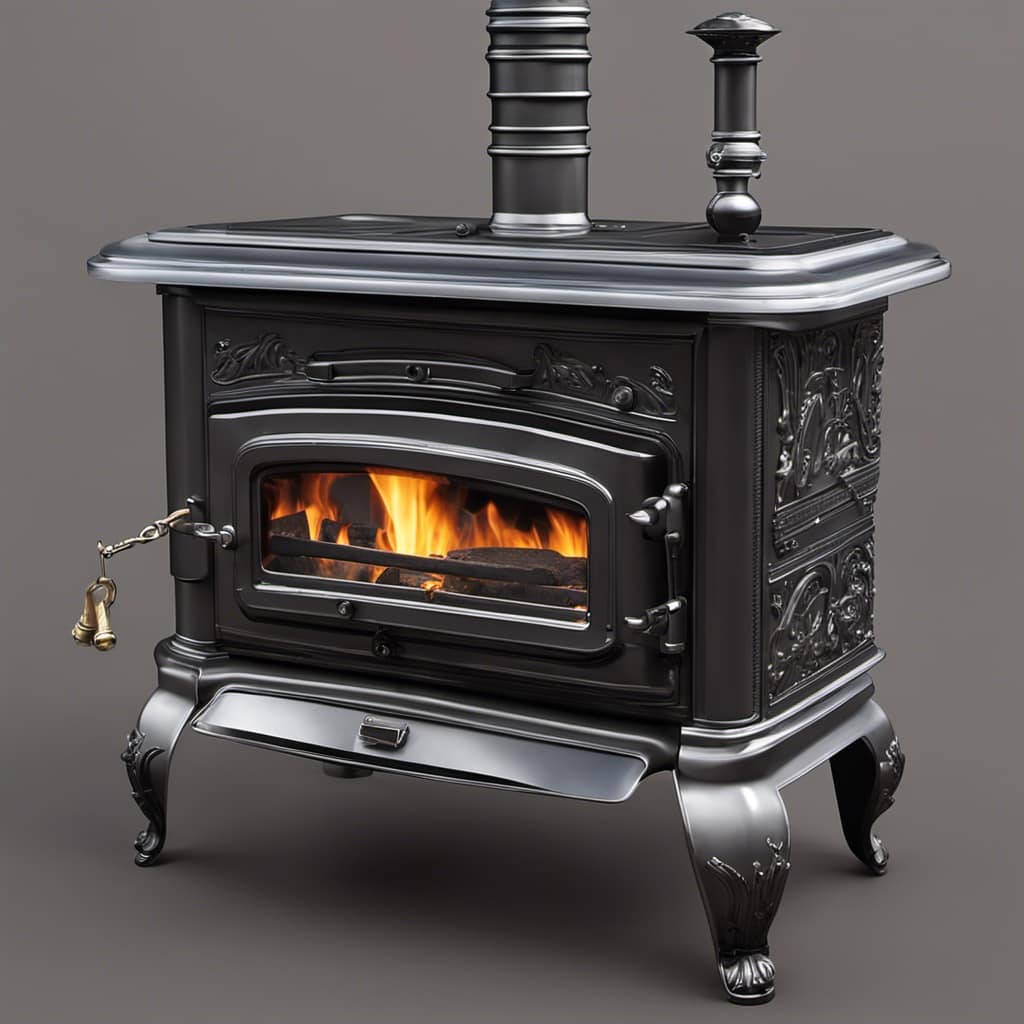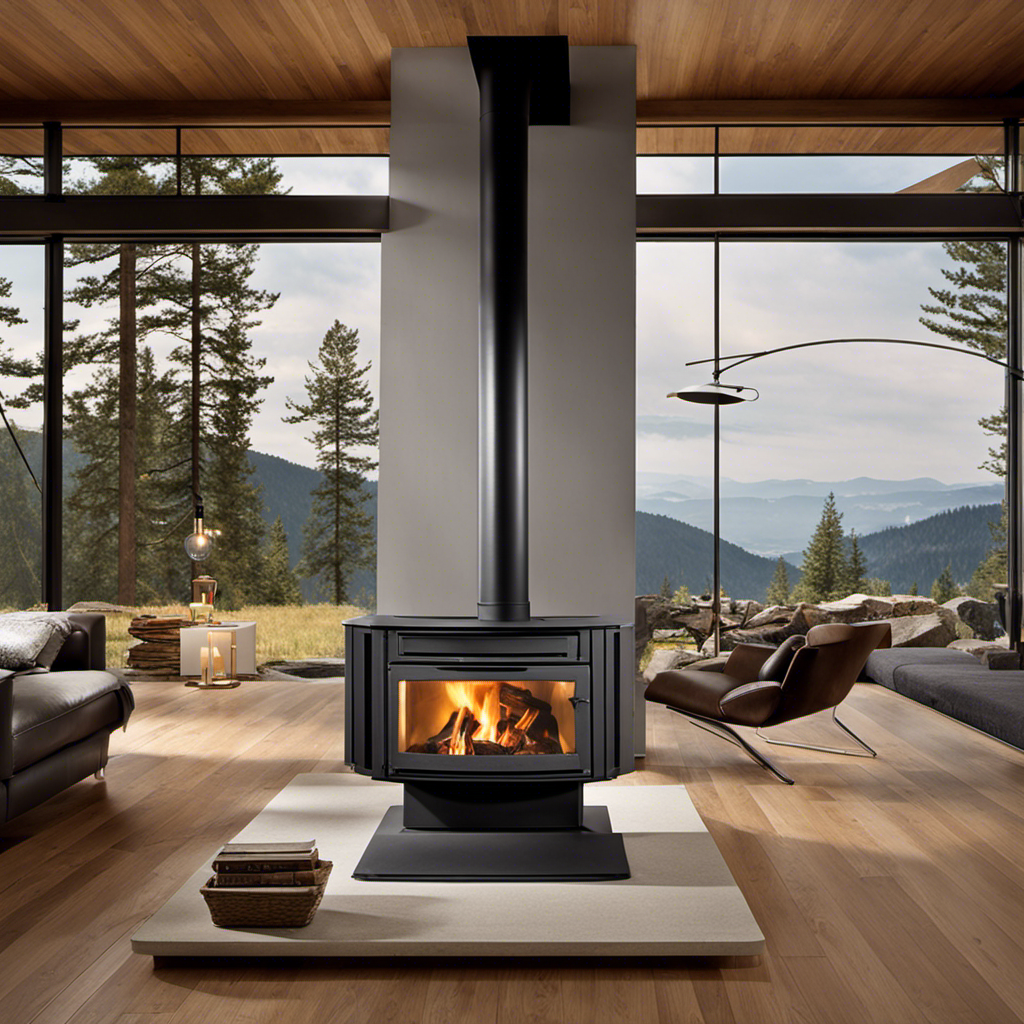
As a homeowner in the market for a wood stove, it is essential for me to ensure that my choice aligns with environmentally friendly practices. That is why comprehending the significance of EPA certification for wood stoves is pivotal.
In this article, I’ll guide you through the key features to look for and how to verify if a wood stove is EPA certified.
By choosing an EPA certified wood stove, you’ll not only enjoy the warmth and coziness but also contribute to a cleaner and healthier environment.
Key Takeaways
- EPA certification ensures compliance with specific criteria set by the EPA for wood stoves.
- EPA certified wood stoves have reduced emissions for better air quality and improved safety standards.
- Verifying EPA certification involves checking for the official EPA label and unique certification number on the stove, and cross-referencing it with the EPA’s database.
- Choosing an EPA certified wood stove offers benefits such as cost effectiveness, improved air quality, longer burn times, and compliance with regulations.
Understanding EPA Certification for Wood Stoves
I’m learning about EPA certification for wood stoves and its importance in reducing air pollution.

The EPA certification process ensures that wood stoves meet specific criteria set by the Environmental Protection Agency. These criteria are based on EPA regulations for wood stoves, which aim to reduce harmful emissions and improve air quality.
The certification process involves testing the stove’s efficiency and emissions levels in a laboratory setting. Stoves that meet the EPA’s standards are awarded a certification label, indicating that they’re clean-burning and environmentally friendly.
This label is important for consumers as it helps them identify wood stoves that are compliant with EPA regulations. By choosing an EPA-certified wood stove, individuals can contribute to reducing air pollution and protecting the environment.
The Importance of EPA Certification
While discussing the importance of EPA certification, it’s crucial to understand how it ensures the environmental friendliness of wood stoves. The drawbacks of non-certified wood stoves and the environmental impact of uncertified wood stoves are significant, making EPA certification a necessary requirement.

Here are four reasons why EPA certification is important:
-
Reduced emissions: EPA-certified wood stoves are designed to emit fewer pollutants, reducing the negative impact on air quality and human health.
-
Increased efficiency: Certified stoves are more efficient, meaning they burn wood more completely, producing more heat with less fuel consumption.
-
Improved safety: EPA-certified stoves undergo rigorous testing for safety standards, reducing the risk of fire hazards.

-
Compliance with regulations: Using an EPA-certified wood stove ensures compliance with local and federal regulations, avoiding potential fines and penalties.
Understanding the importance of EPA certification, it’s crucial to know the key features to look for in an EPA-certified wood stove.
Key Features to Look for in an EPA Certified Wood Stove
When searching for an EPA certified wood stove, it’s important to consider the key features that ensure environmental friendliness and efficiency.
One of the most crucial aspects to look for is energy efficiency. An EPA certified wood stove should have a high efficiency rating, meaning it can produce more heat while using less fuel. This not only saves money but also reduces environmental impact by minimizing the amount of wood needed and the emissions released into the atmosphere.

Another important feature to consider is the environmental impact of the stove. Look for stoves that have low emissions of pollutants such as carbon monoxide and particulate matter. These harmful substances can contribute to air pollution and have adverse health effects.
How to Verify if a Wood Stove Is EPA Certified
To determine if a wood stove is EPA certified, the best approach is to look for the official label and check for the necessary documentation. Here are four steps to verify the certification and find EPA approved stoves:
-
Look for the official EPA label: The label is usually located on the back, side, or bottom of the stove. It will clearly state if the stove is EPA certified.
-
Check for the EPA certification number: The label will include a unique certification number. This number can be cross-referenced with the EPA’s database to ensure the stove is indeed certified.

-
Review the emissions data: The documentation that comes with the stove should provide specific data on the stove’s emissions levels. This data should meet or exceed the EPA’s standards.
-
Consult the EPA’s list of certified stoves: The EPA maintains a list of certified wood stoves on their website. This list can be used to verify the stove’s certification.
Benefits of Choosing an EPA Certified Wood Stove
What are some of the benefits I can expect from choosing an EPA certified wood stove? EPA certified wood stoves offer several advantages in terms of cost effectiveness and environmental impact. Firstly, these stoves are designed to burn wood more efficiently, resulting in reduced fuel consumption and lower heating costs. Additionally, EPA certified wood stoves emit fewer harmful pollutants into the air, which improves air quality and reduces the negative health effects associated with wood smoke. To illustrate the benefits in a more organized manner, here is a table summarizing the advantages of choosing an EPA certified wood stove:
| Benefits of EPA Certified Wood Stoves | ||
|---|---|---|
| Cost Effectiveness | Environmental Impact | Improved Air Quality |
| Lower Heating Costs | Reduced Pollutant Emissions | Health Benefits |
| Longer Burn Times | Sustainable Heating Option | Compliance with Regulations |
| Efficient Heat Distribution | Reduced Carbon Footprint | Increased Energy Efficiency |
| Reduced Maintenance Costs | Renewable Energy Source | Reduced Fire Risk |
Frequently Asked Questions
How Long Does EPA Certification for Wood Stoves Last?
EPA certification for wood stoves typically lasts for a certain period, but it’s important to know how to renew it. Additionally, it’s crucial to understand whether EPA certification expires for wood stoves.

Are There Any Financial Incentives or Tax Credits for Purchasing an EPA Certified Wood Stove?
Yes, there are financial benefits and tax credits available for purchasing an EPA certified wood stove. These incentives are aimed at reducing the environmental impact of wood burning and promoting cleaner and more efficient heating options.
Can I Use a Non-EPA Certified Wood Stove in Areas Where EPA Certification Is Required?
I cannot use a non-EPA certified wood stove in areas where EPA certification is required due to safety concerns. It is crucial to ensure that the wood stove I use meets the necessary standards for emissions and efficiency.
Are There Any Limitations on the Type of Wood That Can Be Burned in an EPA Certified Wood Stove?
There are limitations on the type of wood that can be burned in EPA certified wood stoves. Burning different types of wood can have varying environmental impacts in these stoves.
What Is the Process for Obtaining EPA Certification for a Wood Stove Manufacturer?
The EPA certification process for wood stoves involves rigorous testing and evaluation to ensure compliance with emission standards. EPA certified wood stoves offer benefits such as improved air quality and increased energy efficiency.

Conclusion
In conclusion, EPA certification is crucial when choosing a wood stove. It ensures that the stove meets strict environmental standards and promotes cleaner and more efficient burning.
By verifying the stove’s EPA certification through the manufacturer or by checking for the EPA label, you can be confident in its performance and environmental impact. Selecting an EPA certified wood stove is like choosing a well-oiled machine, efficiently heating your home while minimizing harmful emissions.
Growing up surrounded by the vast beauty of nature, Sierra was always drawn to the call of the wild. While others sought the comfort of the familiar, she ventured out, embracing the unpredictable and finding stories in the heartbeat of nature.
At the epicenter of every remarkable venture lies a dynamic team—a fusion of diverse talents, visions, and passions. The essence of Best Small Wood Stoves is crafted and refined by such a trio: Sierra, Logan, and Terra. Their collective expertise has transformed the platform into a leading authority on small wood stoves, radiating warmth and knowledge in equal measure.










